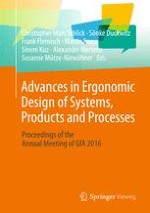2017 | OriginalPaper | Chapter
Age-Differentiated Analysis of the Influence of Task Descriptions on Learning Sensorimotor Tasks
Authors : Francoise Kuhlenbäumer, Philipp Przybysz, Susanne Mütze-Niewöhner, Christopher Marc Schlick
Published in: Advances in Ergonomic Design of Systems, Products and Processes
Publisher: Springer Berlin Heidelberg
Activate our intelligent search to find suitable subject content or patents.
Select sections of text to find matching patents with Artificial Intelligence. powered by
Select sections of text to find additional relevant content using AI-assisted search. powered by
